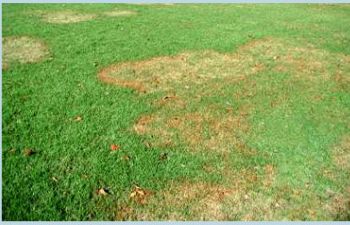
It is not always easy to keep your lawn free of fungus or disease. A common grass fungus for the early fall is lawn rust. This type of fungus is known for appearing where excess moisture resides and on turf that has recently slowed in growth.
How To Spot Grass Rust Fungus?
Not sure if you have lawn rust? Simply pull up a couple of your grass blades. If you have rust fungus, you’ll notice that the blade will be coated with a fine layer of dust that is “rust-colored” (yellowish brown or orange –red). These are the spores of this particular grass fungus. You’ll also begin to see patches of weak or thin grass along with these yellow or orange spots on the leaf blades.
Rust fungus spores typically develop during times when the turf doesn’t sufficiently dry, which is common in the following conditions:
- During a cool night when there are heavy amounts of moisture or dew
- In warm, humid conditions such as after a rainfall
- When lawn thatch is too thick
- When mowing is scarce or infrequent
What’s the Harm in Grass Rust Fungus?
When rust fungus covers the leaf blades, it can compromise photosynthetic action. This results in a lack of vigor and greater exposure to further lawn fungus and disease. In addition, the spores have a high tendency to spread since they easily cling to shoes and mower blades.
Need help controlling your lawn rust? Call the experts of Pannone’s Lawn Pros & Landscaping. We can give you tips to prevent further spreading of lawn rust as well as prepare your turf so that the fungus no longer has an ideal environment to grow.
Posted on behalf of
1444 Buford Hwy
Cumming, GA 30041
Phone: (678) 294-0351
Email: pannoneslawnpros@gmail.com
Monday - Saturday 8:00 AM – 6:00 PM
